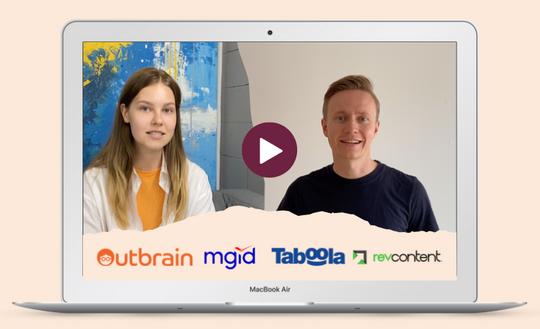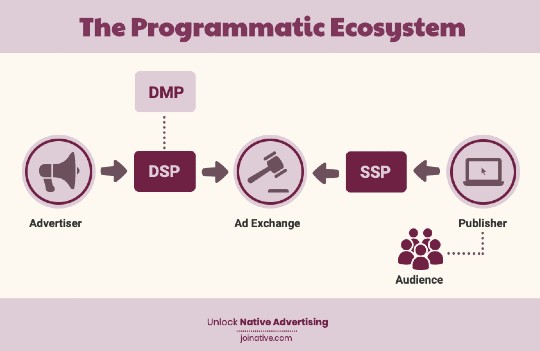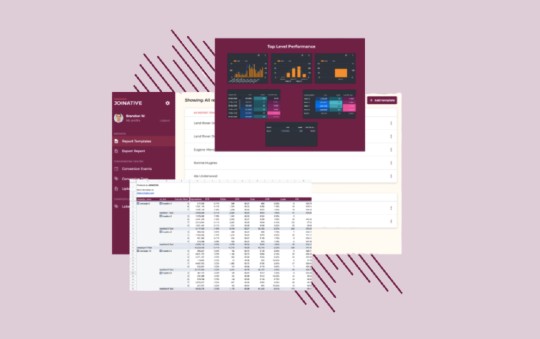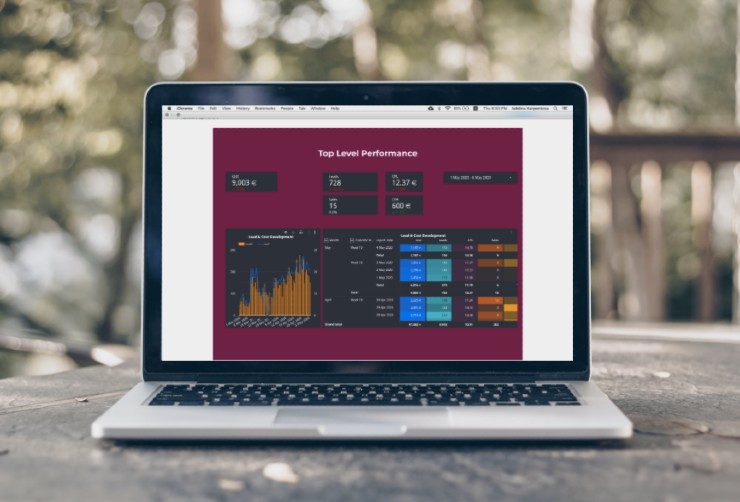
Programmatic Advertising Explained. DSP, SSP, and Ad Exchanges
The advertising industry has undergone great changes in the last decade. The development of programmatic advertising simplified the relationship between advertisers and publishers and let everyone scale faster. But what is online advertising today?
You don’t need to look for the relevant publishers, reach out to sellers and ask them to sell you ad placements. Instead, you can select the platform where the whole process will be done automatically, allowing you to specify your audience’s location, interests, age, and many more. Moreover, you don’t even need to think of the algorithms that make these platforms work.
Coming across DSP, SSP, or DMP abbreviations, you might have a wild guess everything is a bit more complicated. To help you not fall behind technology progress but leverage its advantages instead, we explained programmatic advertising and its ecosystem in simple terms.
- What is programmatic advertising?
- Programmatic advertising and native advertising
- Programmatic advertising ecosystem
- DSP explained
- DMP explained
- SSP explained
- Ad exchanges
- Real-time bidding
- Ad networks
What is programmatic advertising?
Programmatic advertising is the use of technology to buy and sell ad inventory automatically, where advertisers and publishers only set conditions that should be met.
Programmatic algorithms leverage machine learning and AI technologies that evaluate user behavior, demographics, cookie data, and advertisers’ bids before determining which ad will be shown to a user.
Now, ad space is traded without negotiations via ad exchanges (see the explanation below). To display your ads on relevant websites, you need to select the target audience and set your bid. That would be enough in an ideal world. But as programmatic advertising is still developing, it’s recommended that you keep tracking the performance of your ads and configure targeting preferences to reach the right audience.
How does programmatic advertising work?
First of all, advertisers launch ad campaigns, specify their target audience and set bids. A publisher requests to fill some space on their website with a particular kind of ad. When a user lands on a website, programmatic advertising platforms exchange data. Once the highest bidder is identified, their ad is displayed on the web page.
Programmatic is usually traded on a CPM (cost-per-mille or cost-per-thousand) basis.
Cost-per-mille = cost per 1,000 impressions.
No matter how many clicks your ad gets, you’ll only pay for a number of impressions served. The programmatic CPM varies from $1 to $10 for different targeting options (mind that the average CPM for video ads is usually higher). The higher you bid, the more likely it is that your ads will be displayed. Also, mind that you’ll be charged the sum needed to place your ad above the next highest bid. It means that if your bid is too high, it’ll be adjusted.
Programmatic advertising and native advertising
Programmatic is applied for a variety of advertising methods, such as display, social, video, native, and more. We’re going to talk about the role of programmatic in the development of native advertising.
Programmatic native advertising defined
If you search for the definition of programmatic native advertising, you’ll notice it doesn’t differ from the typical native advertising definition at all. Some marketers use native advertising and programmatic native interchangeably, confusing people new to the programmatic advertising world.
So aren’t native advertising and programmatic native advertising the same? Not at all.
Native advertising is an advertising method that involves using ads that match the form and feel of the editorial content of the website they’re displayed on.
Programmatic advertising introduces algorithms that facilitate the process of ad trading.
So, programmatic native advertising is an advertising method where ads that match the form and feel of the editorial content of the website they’re displayed on are traded programmatically.
At first, programmatic algorithms seem to contradict the very nature of native advertising that implies the ability of ads to fit into every single website seamlessly. However, technologies tackle this issue, too – now, ads are broken down into separate components, such as headline, content description, content URL, image, and brand name, which allows native ads to be customized automatically for any site.
While most of the native ads are run by programmatic technologies, some publishers still sell and buy ad space directly. In this case, the same native ad is shown to every website visitor, no matter what cookie data would say. This also means an advertiser isn’t able to optimize their campaigns towards people that are most likely to click or convert.
To better understand how programmatic technologies work and how you as an advertiser fit into all this, we’ll move on to describing the whole programmatic advertising ecosystem.
On-Demand Video Course On Native Advertising
Boost your ROAS with native ads. Enroll now with our limited 30% discount.

Programmatic advertising ecosystem
With the evolution of online advertising, multiple components joined the advertising ecosystem to make online campaign management simpler (however, for those who aren’t familiar with programmatic terminology, it could seem more complicated).
Let’s take a closer look at every component of the programmatic advertising ecosystem.

What is DSP?
In programmatic advertising (native included), an advertiser works with a DSP.
DSP, or Demand-Side Platform, is an application that enables advertisers to buy ad impressions. DSPs allow advertisers to target certain audiences, control bids, and receive centralized reporting data.
As DSP only represents a buyer’s side, it needs to be integrated with some supply source that offers ad inventory. Therefore, Demand-Side Platforms are plugged into multiple Ad Exchanges that, in their turn, receive data from Supply-Side Platforms (DSP analogues for publishers).
Working with a DSP, you get access to the following benefits:
- A single interface to launch, manage, and optimize all your campaigns.
- Access to thousands of ad placements at once.
- Rich audience targeting capabilities.
- Real-time insights.
- Access to the most vital metrics to analyze campaign performance.
- More effective budgeting.
Demand-Side Platforms for native advertising
Here are a few DSPs that help advertisers buy native traffic:
- LiquidM – a self-service DSP for efficient programmatic campaign management.
- Voluum DSP – a platform to buy, track, and scale native ads across 20+ ad networks. It integrates with Taboola, Outbrain, Nativo, TripleLift, Revcontent, and more.
- Zemanta – a DSP acquired by Outbrain. The platform allows advertisers to select from different native ad formats to promote their content.
- Earnify – one more demand-side platform connected to all the major native ad networks.
However, you don’t need only native specific DSPs to do programmatic native advertising. General DSPs, such as Google’s‘ Display & Video 360 or MediaMath, will also work.
To take full advantage of the many benefits of programmatic advertising, a DSP needs to be connected to a DMP, or Data Management Platform.
Did you say ‘DMP’?
A Data Management Platform (DMP) is a software that is used to store and sort incoming cookie data and build audience segments to run highly targeted advertising campaigns.
DMPs are also integrated with other parts of the programmatic advertising ecosystem, allowing to build customized audiences. Data Management Platforms pass the audience data to DSPs for the latter to use the data for ad targeting. In other words, DMPs feed DSPs with processed information. Most of the solutions available on the market are DSPs and DMPs in one.
What is SSP then?
SSP, or Supply-Side platform, is an application that enables publishers to sell ad space. With SSPs, publishers can manage advertising inventory, fill it with ads, and monetize their websites.
Like a Demand-Side Platform, a Supply-Side Platform connects to an Ad Exchange and informs it of the characteristics of the available ad inventory. SSPs centralize the ad inventory, allow publishers to determine the minimum price, and participate in real-time auctions.
Ad Exchange
An Ad Exchange is an open marketplace that facilitates the process of trading digital ad inventory.
Simply put, an ad exchange is where DSPs and SSPs meet. It sits in the middle of the ecosystem and makes the whole transaction possible.
Ad exchanges evaluate incoming bids from advertisers’ DSPs and determine a winner based on bids and eligibility.
Real-Time Bidding
Real-time bidding (RTB) is the most popular form of programmatic advertising. But not all programmatic is RTB.
Real-time bidding is a way of buying and selling ad impressions via online auctions that occur in real-time.
With programmatic ads, the whole transaction occurs in milliseconds while a web page is loading. Here’s what happens before a visitor sees a website (and its ads):

Wait, what about Native Ad Networks?
First of all, ad networks and ad exchanges aren’t the same.
A native ad network is defined as a technology platform that connects media buyers and publishers. It allows them to set requirements, trade ad space, and coordinate ad campaigns.
You could use the same definition to explain an ad exchange, right? Although both technologies have a similar aim, they’re still not the same.
An ad network is an intermediary between advertisers and publishers. It collects the publisher’s inventory and sells it to advertisers. An ad exchange is an open marketplace (with some restrictions). Advertisers and publishers participate in the direct transaction.
The opportunity to participate in real-time auctions sets DSPs and ad exchanges apart from ad networks, although some native ad networks are supporting RTB auctions now. Ad exchanges also give advertisers better control of their campaigns, providing them with full details of the transaction process and allowing to run more granular campaigns.
Note: Ad exchanges can connect to several ad networks. Similarly, ad networks can sell their traffic through several ad exchanges. However, the significant part of native ad networks inventory isn’t available for open auctions. And if you want to get access to, let’s say, Taboola’s or Outbrain’s inventory, it’s usually better to work with these platforms directly.
Summary
The world of online advertising has a diverse ecosystem. Every component of its ecosystem has its advantages and challenges. In follow-up posts, we’ll tell you more about the differences between different advertising software. Subscribe to our email newsletter not to miss anything.
If you’re already taking advantage of native ad networks, such as Taboola and/or Outbrain, don’t miss your chance to optimize your workflow with our Native Advertising Optimization Tool. Start your free 30-day trial today or get in touch with us to learn more.

 Feed
Feed


